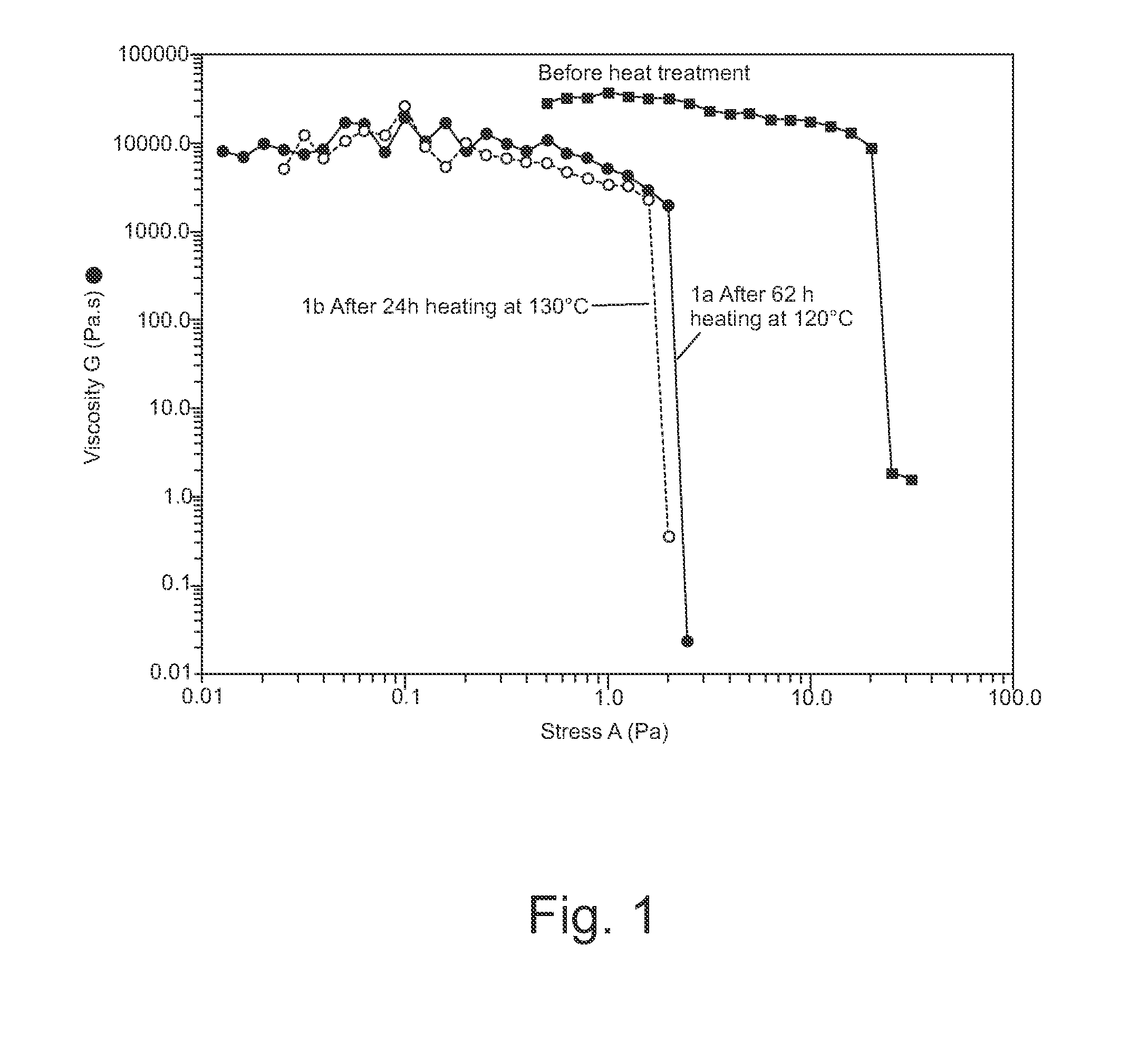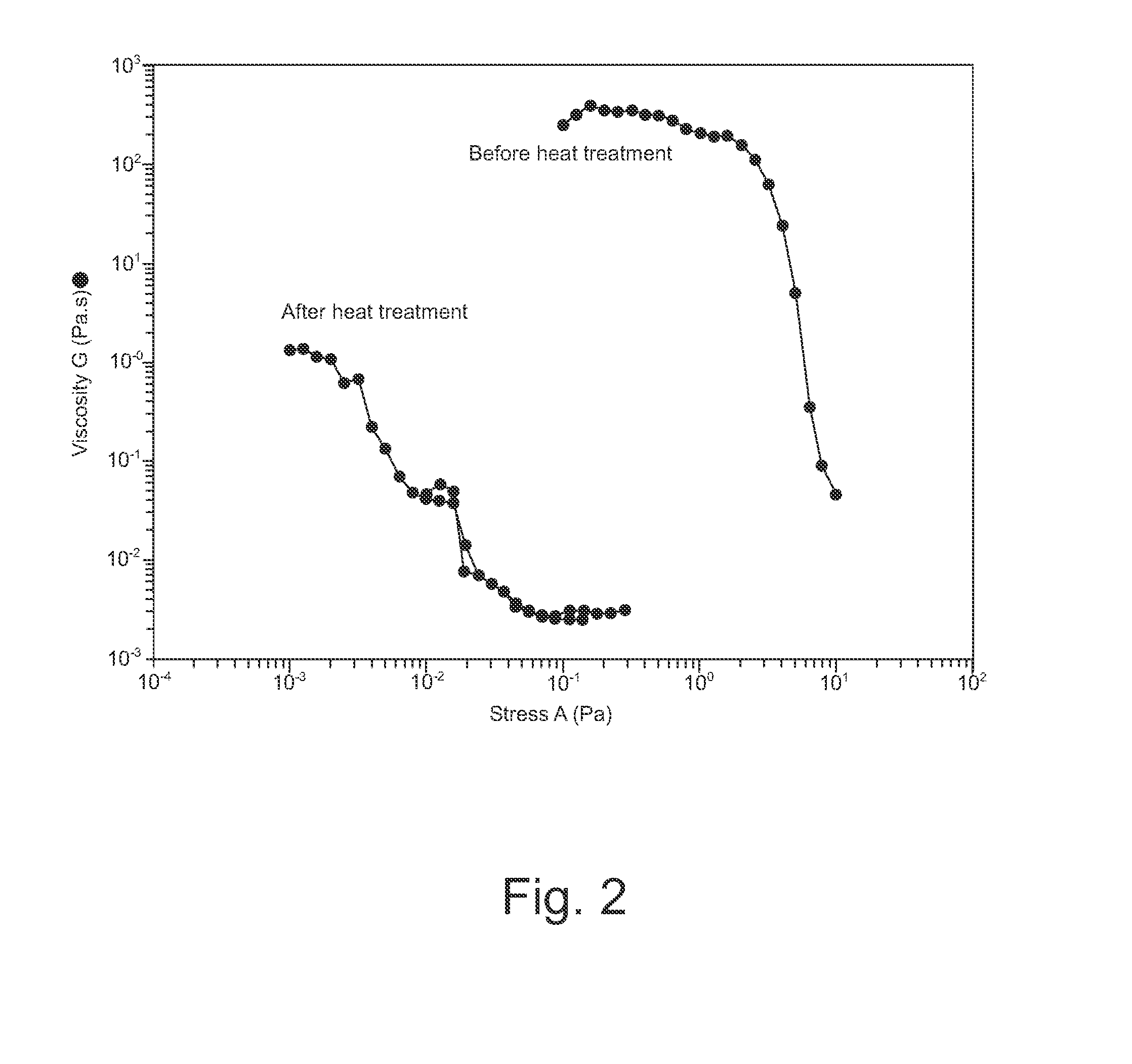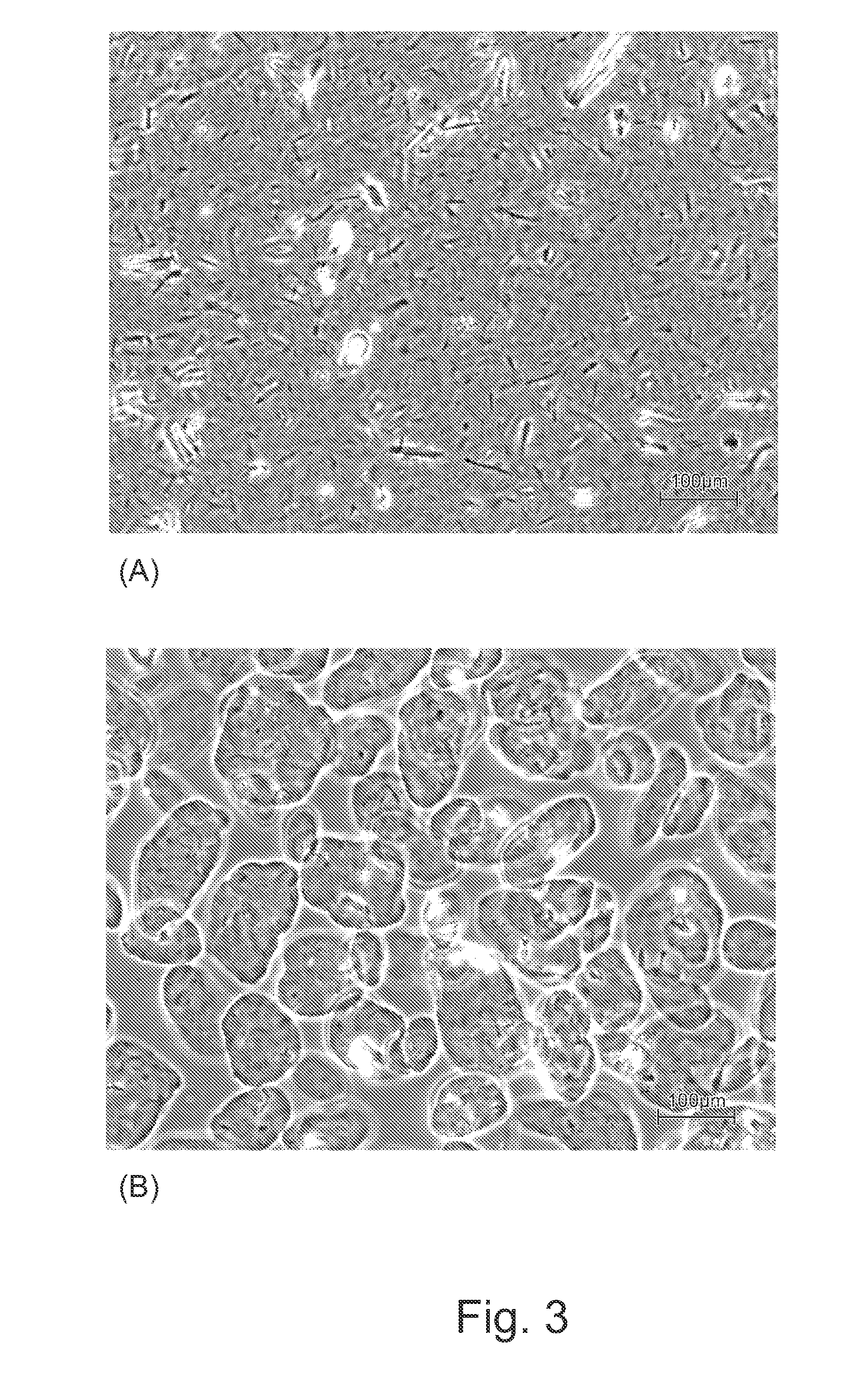Method of modifying nanofibrillar cellulose composition
a technology of nanofibrillar cellulose and composition, which is applied in the field of modifying nanofibrillar cellulose composition, can solve the problems of high nfc/mfc viscosity in the aqueous state, process that is often industrially tedious and expensive, and achieves low zero-shear viscosity, low yield stress, and low viscosity. low
- Summary
- Abstract
- Description
- Claims
- Application Information
AI Technical Summary
Benefits of technology
Problems solved by technology
Method used
Image
Examples
example 1
General Example of Preparing Oxidized NFC
[0051]Samples of oxidized NFC were prepared. Firstly, primary alcohols of cellulose was oxidized to aldehydes and carboxylic acids through TEMPO oxidation by using sodium hypochlorite as the main oxidant to obtain oxidized cellulose with a certain carboxylate content expressed as mmol COOH / g pulp, whereafter the oxidized pulp was fibrillated to NFC.
example 2
[0052]Oxidized cellulose with 1.03 mmol COOH / g was prepared using the same method as described in Example 1. Then, the oxidized cellulose was fibrillated in low concentration (2.5%) aqueous dispersion with rotor-rotor dispergator (Atrex) to obtain oxidized NFC. After the fibrillation, heat treatment was performed in a 500 mL Büchi reactor (stainless steel) on 450 g sample of NFC. The sample was dispersed with Waring blender 10 seconds for 3 times and then placed in 138° C. oil bath for 24 hours. The sample temperature was kept at 130° C. and the pressure inside the Büchi reactor was kept at an overpressure of between 1.5-2 bar. During the treatment the sample was mixed by using an anchor blade at around 80 rpm.
[0053]The pH values of the sample before and after the heat treatment were 7.4 and 5.1, respectively. The results measured with a rheometer before and after the heat-treatment are shown in FIG. 2. As can been seen in FIG. 2, both the zero-shear viscosity and yield stress decre...
example 3
[0054]A sample of carboxymethylated cellulose was prepared, which sample has a degree of substitution (DS) of 0.14, and then it was fibrillated in 0.9% concentration with Masuko Supermasscolloider to obtain carboxymethylated NFC. After the fibrillation, heat treatment was performed in a 500 mL Büchi reactor (stainless steel) on 450 g sample of NFC. The sample was dispersed with Waring blender 10 seconds for 3 times and then placed in 138° C. oil bath for 24 hours. The sample temperature was kept at 130° C. and the pressure inside the Büchi reactor was kept at an overpressure of around 2 bar. During the treatment the sample was mixed by using an anchor blade at around 80 rpm.
[0055]The pH values of the sample before and after the heat treatment were 7.6 and 5.3, respectively. The results measured with a rheometer before and after the heat-treatment are shown in FIG. 4. As can been seen in FIG. 4, the viscosity decreased clearly after the heat treatment.
PUM
| Property | Measurement | Unit |
|---|---|---|
| temperature | aaaaa | aaaaa |
| zero shear viscosity | aaaaa | aaaaa |
| zero shear viscosity | aaaaa | aaaaa |
Abstract
Description
Claims
Application Information
 Login to View More
Login to View More - R&D
- Intellectual Property
- Life Sciences
- Materials
- Tech Scout
- Unparalleled Data Quality
- Higher Quality Content
- 60% Fewer Hallucinations
Browse by: Latest US Patents, China's latest patents, Technical Efficacy Thesaurus, Application Domain, Technology Topic, Popular Technical Reports.
© 2025 PatSnap. All rights reserved.Legal|Privacy policy|Modern Slavery Act Transparency Statement|Sitemap|About US| Contact US: help@patsnap.com



